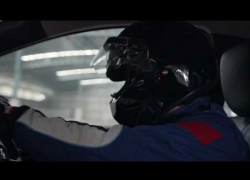It was one of those meetings you knew was inevitable. After years of slamming irresponsible bus drivers and operators, not to mention starting an online petition to have mandatory speed limiters installed on all buses and trucks nationwide, in the interests of balanced journalism, I eventually sat down with a bus operator to give them a chance to air their side.
Now you may be wondering, if it is in the spirit of balanced journalism, why wait years to sit down with an operator? Well, this operator, who for her own protection we shall just call Kathy, summed it up. “We bus operators are terrified to come out and speak. We feel the hatred. We just know that nothing we do or say will be right, so what’s the point of inviting hate. People have made up their minds; and we’re an easy target”
I must admit it was hard to offer sympathy, but thankfully, that is not what Kathy was looking for here from me. She called this meeting because she wants the motoring public to know that while bus operators know they have their sins, they also have their reasons.
“We’re bound to not see eye to eye on some topics, but there’s a reason that we do some of the things we do”, she continued over lukewarm coffee that had gone past its prime waiting for her to draw breath and give it some attention.
“Are you prepared for some hate comments?” I explained as frankly as I could without trying to dissuade her from telling her story. “Yes, we’re used to it. But we get nothing done with hate. What we would like is to get the motoring public’s opinion, void of the hatred that blinds progress” She tells me in so many words.
“This is why we came to you, because it is obvious that your readers are quite passionate, educated, yet level-headed enough to engage in a healthy discussion that can help us find solutions, rather than just point out problems and stoop to the more popular, yet highly unproductive cyber bullying.”
It’s brilliant, I thought; soften us up with flattery. But modesty aside, I know she has a point. And while I’m certain that we will not all agree with all of them, if we can walk away learning even just one thing––even if it is just that readers of this blog are awesome––that’s one more thing than we walked in with, and the whole exercise becomes worthwhile. So I fire the first shot.
“If you’re so concerned about your image and that you can do nothing right, why not install speed limiters across your fleet? That’s a huge step towards safety and mega pogi points right there.”
She is blunt, straight to the point, and unapologetic. “We would if we thought it would make a difference. But speed is one of the smallest problems facing buses in Metro Manila. And as all my buses operate in Metro Manila, we see it as an unjustifiable expense. We average 40km/h. Speed is not the problem that needs to be addressed here. Plus what if it voids our warranty?”
We don’t get off to a very good start. But I try my best to remain objective. “ The Skyway is part of Metro Manila; so is Commonwealth and EDSA, where many more have perished. Average speed is not the same as maximum speed”
“I don’t mean to sound insensitive.” Kathy continues. “But if you consider the amount of passengers we ferry, and were talking millions per day, if you prorated the amount of injuries and fatalities, you’ll probably find that it’s much, much less than private vehicles.”
“Much like airplanes.” Her friend chimes in. “When one goes down, it makes international news. But overall, it is still the safest form of transport in the world. “It is only because we’re big that it gets national attention.” Kathy cuts in to finish off the sentence.
I could sense that we were not going to see eye to eye here, and there was plenty more to cover, so I changed gears. “What about the roadworthiness of Philippine buses?”
If Kathy was sipping her coffee at the time I said that, it would have turned into a cappuccino from the steam coming out of every orifice on her face. “Hay! Don’t get me started on that! Do you know how many buses there are in Metro Manila? Over 5,000. Do you know how many inspection bays there are? 1! Maybe 2! So the LTO actually make you pay a non appearance fee because they physically cannot do it!”
“It’s a joke!” she continued in anger. “Another thing. I clarified the 15-year rule with the LTFRB as part of my fleet was approaching. They tell us that so long as the buses pass the inspection, we can renew the franchise. So I spent over a million pesos fixing my buses that were turning 15 years old up. They passed the inspection. 2 months later, the LTFRB decides one morning, as in literally one morning, that buses over 15 years old are no longer allowed. I have 50 buses now sitting there that I just spent on that cannot be run or sold! I use them as barracks for my people.”
The frustration is percolating her every word as she continues to explain how the root of all problems starts with the LTFRB and the LTO. She explains how the red tape, the corruption and the ineptness is forcing legitimate bus owners into operating ‘colorum’ and cites how she bought 15 brand new buses from HINO to replace the older ones that the LTFRB grounded, but the transfers, which should take no longer than 3-5 working days, are still not done after 6 months. This means she is now paying amortization for buses that are not earning a cent.
“We’ve been in business for 56 years.” She says. “But honestly, it has gotten so bad that if someone were to just pay me a fair amount for our investment, I’d gladly give this business up in a heartbeat––even if I’m a 3rd generation bus owner. It is just not worth it.”
Kathy assures me that she sums up the sentiments of other bus operators when she says that the cost of doing business has already exceeded any incentive. “There’s just no money to be made when you do it by the book.” She says in complete frustration. “They hit you for everything. And ok lang if they were efficient, but they are both inept and corrupt; they thrive on confusion. That’s why they invented the word colorum. Go ahead, look up the word, it is a flower or the plural for color or something. They invented it as a catch all; anything wrong is colorum.”
“Case in point, Isuzu (or HINO?) have two numbers: a chassis and a VIN. One idiot stenciled the wrong number. So they cancelled the franchise! Colorum na yan! You replace the engine, Colorum na yan! One clerk made a typo. We were off the road for 6 months!”
I can feel the frustration, but I’m careful not to marinate in it and get caught up in the emotion. Not for anything; I’ve heard other bus operators say the same thing, and while it may be a common tale, there are other questions to be asked. Besides, I got the picture.
What about the discipline of your drivers? Drug testing? And that God awful boundary system.
“There’s no bus driver that would work for minimum wage. And if they did, we, as a bus company, would never make money. If it was predictable, I’d pay minimum wages. But it’s not. Everyone compares us to America, but there they have a system, a schedule, and dedicated bus stops.”
“Yes” I ask. “But wasn’t there a law passed?” “Yes” She replies. “The rule was enforced that bus drivers are not allowed to work for boundary or commission anymore. But get this, the labor code replaced it with minimum wage plus incentives.”
“And recklessness?” I press on.
“I once fired a driver because he had too many accidents. My company has a policy and I enforced it. Well he took us to labor. And won. One of the problems is that there’s no central database, at least none available to us, that can tell us how many accidents a bus driver has had before we hire. But funnily enough, when they catch your bus driver, lo and behold, they will tell you and the press how many accidents he has had and how grossly irresponsible you are for hiring him.”
“And drug testing?” Kathy says with a laugh. “We conduct regular drug testing. Once, 2 of our drivers failed. Not only are we NOT allowed to fire them, we were obliged to pay for their rehab and take them back when they’re done.”
*Kathy assures me that she and other bus operators will be reading the comments and responding. So as emotional a topic as it is, let's try and keep this productive. Who wants to go first?



